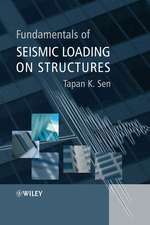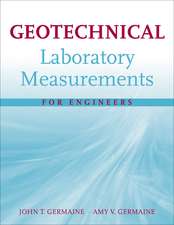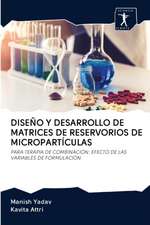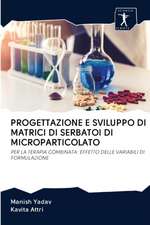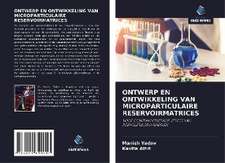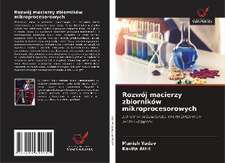Bioaerosols Emission from Anthropogenic Sources: Influencing Factors, Microbial Diversity, Epidemiological Threats, and Control Approaches
Editat de Nitin Kumar Singh, Gaurav Sanghvi, Manish Yadaven Limba Engleză Paperback – 10 oct 2023
- Identifies potential emission stages at different anthropogenic sources of bioaerosols
- Discusses characteristics, fate and development of effective control strategies for minimizing exposure to site specific bioaerosols
- Presents cleaner production and sustainable development tactics of bioaerosols
Preț: 848.37 lei
Preț vechi: 1111.88 lei
-24% Nou
Puncte Express: 1273
Preț estimativ în valută:
162.33€ • 169.16$ • 134.41£
162.33€ • 169.16$ • 134.41£
Carte tipărită la comandă
Livrare economică 27 martie-10 aprilie
Livrare express 26 februarie-04 martie pentru 96.60 lei
Preluare comenzi: 021 569.72.76
Specificații
ISBN-13: 9780443153198
ISBN-10: 0443153191
Pagini: 308
Dimensiuni: 191 x 235 x 19 mm
Greutate: 0.53 kg
Editura: ELSEVIER SCIENCE
ISBN-10: 0443153191
Pagini: 308
Dimensiuni: 191 x 235 x 19 mm
Greutate: 0.53 kg
Editura: ELSEVIER SCIENCE
Cuprins
1. Bioaerosols as emerging air pollutant and sustainability indicator: Various sources, sampling strategies, characteristics, diversity, and control approaches
2. Characteristics, emission factors, role of meteorology in dispersion, and potential health risks of wastewater treatment associated bioaerosols
3. Bioaerosols emission from composting sites: Exposure to endotoxins and associated health issues
4. Characteristics, size distribution, and exposure risk from bioaerosols emitted from urban and rural sanitation facilities
5. Bioaerosols monitoring in slaughter facilities: Characteristics and distribution trends
6. Abundance and diversity of bioaerosols in laboratories: Emission factor, survival conditions and possible health threats
7. Landfill site bioaerosols: Characteristics, seasonal variation, and potential health hazards
8. Airborne contamination in and around hospitals: Effect of ventilation and survival of bioaerosols
9. Bioaerosols emissions from livestock facilities: Sources, characteristics, and distribution
10. Role and characteristics of bioaerosols from Municipal/organic waste management facilities: Impact factors and potential health hazards
11. Diverse quantification techniques for detection of microbial communities in bioaerosols: Experience from anthropogenic sources
12. Epidemiological threats associated with anthropogenic sources of bioaerosols: Way forward for social sustainability
13. Microbial communities of source specific bioaerosols, and its association with specific diseases
Analyzing the role of bioaerosols during pandemic and/or epidemic conditions: A case study of COVID-19
2. Characteristics, emission factors, role of meteorology in dispersion, and potential health risks of wastewater treatment associated bioaerosols
3. Bioaerosols emission from composting sites: Exposure to endotoxins and associated health issues
4. Characteristics, size distribution, and exposure risk from bioaerosols emitted from urban and rural sanitation facilities
5. Bioaerosols monitoring in slaughter facilities: Characteristics and distribution trends
6. Abundance and diversity of bioaerosols in laboratories: Emission factor, survival conditions and possible health threats
7. Landfill site bioaerosols: Characteristics, seasonal variation, and potential health hazards
8. Airborne contamination in and around hospitals: Effect of ventilation and survival of bioaerosols
9. Bioaerosols emissions from livestock facilities: Sources, characteristics, and distribution
10. Role and characteristics of bioaerosols from Municipal/organic waste management facilities: Impact factors and potential health hazards
11. Diverse quantification techniques for detection of microbial communities in bioaerosols: Experience from anthropogenic sources
12. Epidemiological threats associated with anthropogenic sources of bioaerosols: Way forward for social sustainability
13. Microbial communities of source specific bioaerosols, and its association with specific diseases
Analyzing the role of bioaerosols during pandemic and/or epidemic conditions: A case study of COVID-19


